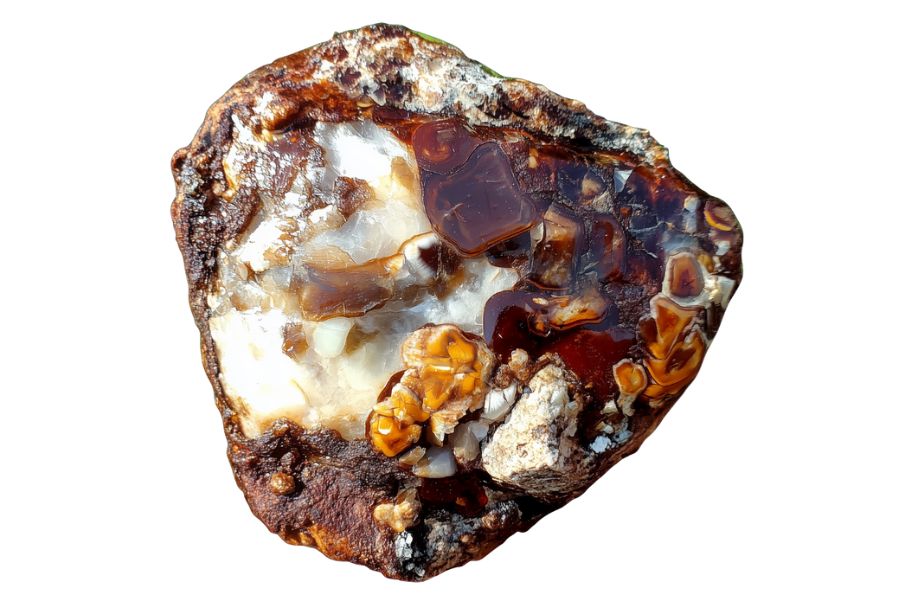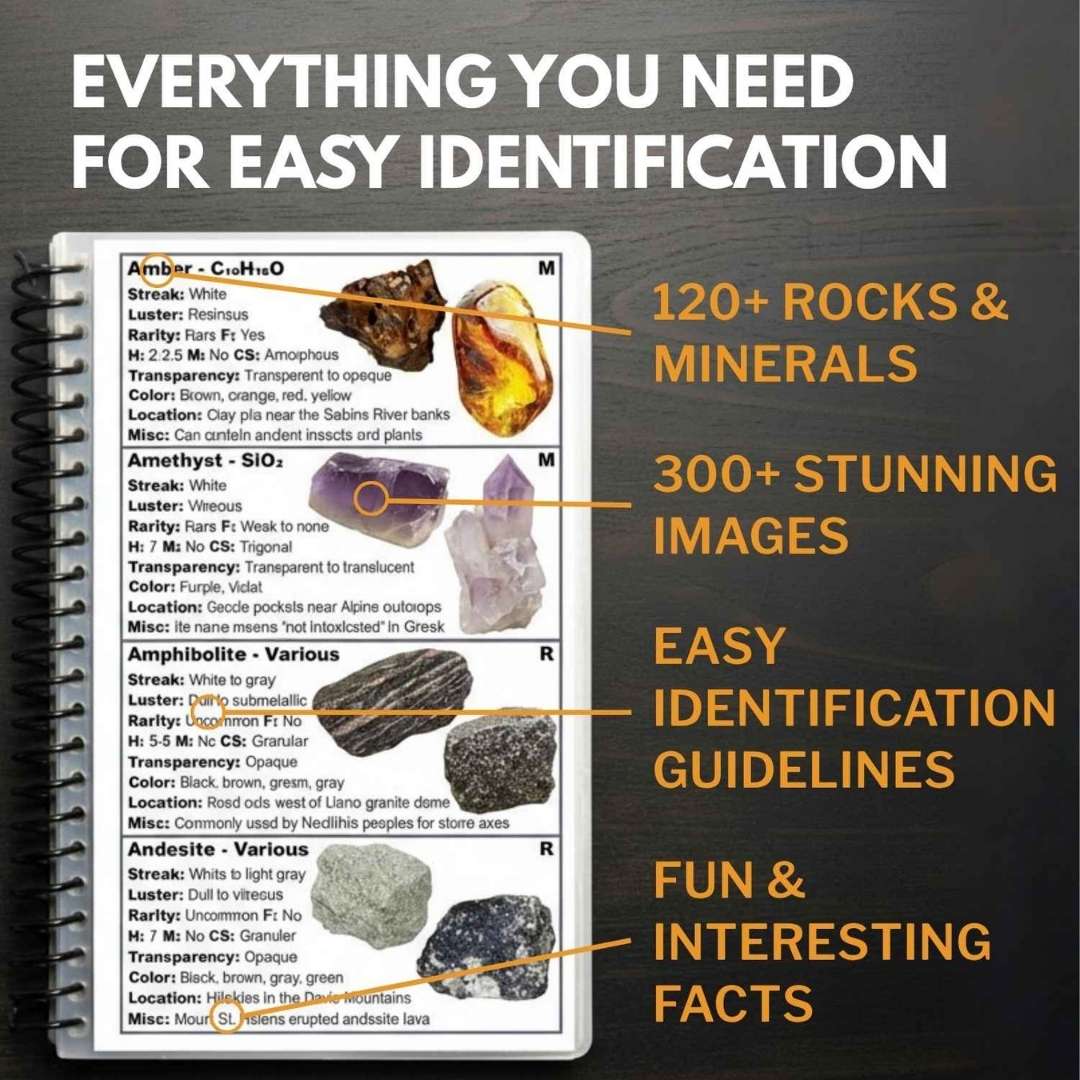Texas rockhounds often overlook the stunning fire agates hiding in the western parts of the state. These vibrant gemstones, with their unique play of colors, can be found scattered across several counties, especially near old volcanic areas.
Many collectors waste countless hours searching in the wrong spots or leave empty-handed because they don’t know the prime locations. Some even give up after a few failed attempts, missing out on beautiful specimens that could be just around the corner.
We’ve done the legwork to bring you the most productive fire agate hunting grounds in Texas. This guide points you to the exact spots where you’re most likely to find these gorgeous gems, saving you time and frustration.
All you need beyond that is Rock Chasing’s Texas Rocks & Minerals Identification Field Guide to make sure you recognize what you’ve found. It keeps you from walking right past something rare or tossing a valuable piece aside without realizing it.
How Fire Agate Forms Here
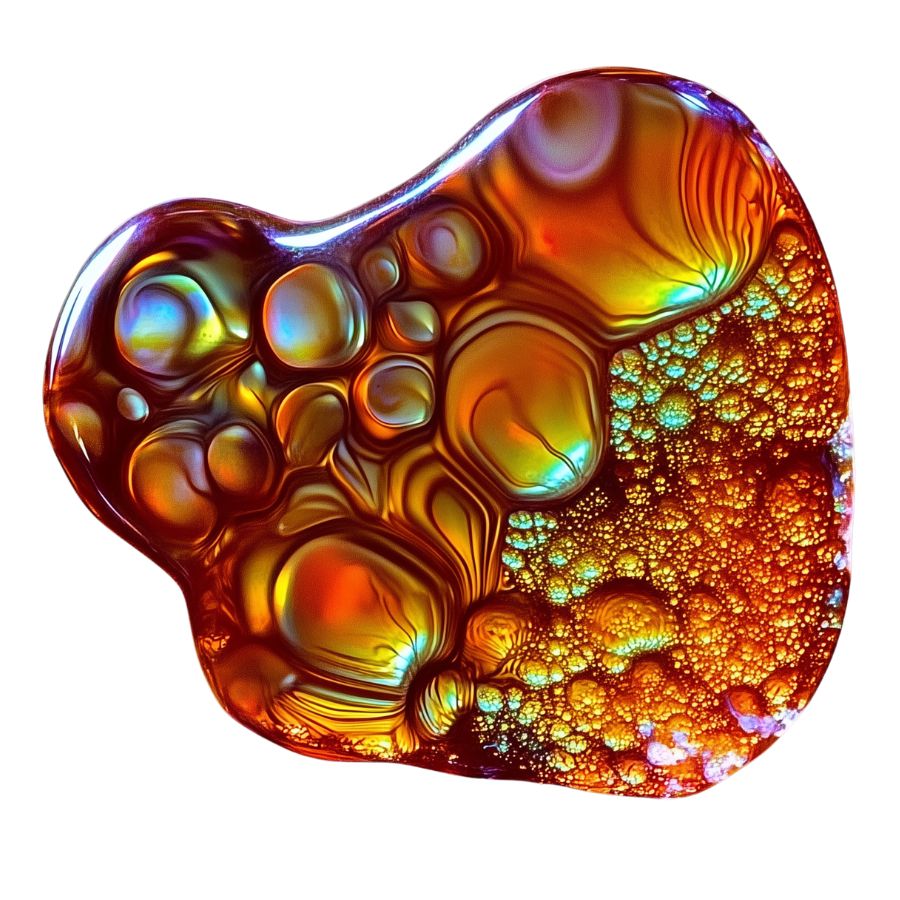
Fire Agate forms when silica-rich fluids seep into layers of chalcedony during volcanic activity. As these fluids cool down, they create super-thin layers of iron oxide and silica, kind of like stacking colorful sheets of plastic.
The iron oxide creates those beautiful iridescent colors you see – reds, oranges, and browns that seem to dance when you move the stone.
What’s really cool is that these layers are only about 0.5 microns thick (that’s thinner than a human hair!).
The more layers there are, the more intense the fire effect becomes. The whole process happens deep underground where hot water and minerals mix together over millions of years.
Types of Fire Agate
Fire agates represent nature’s artistry at its finest, showcasing spectacular plays of color that seem to dance within the stone. Each variety offers its own unique display of iridescent fire effects, created through millions of years of geological processes that layered minerals in distinctive patterns.
Brown Fire Agate
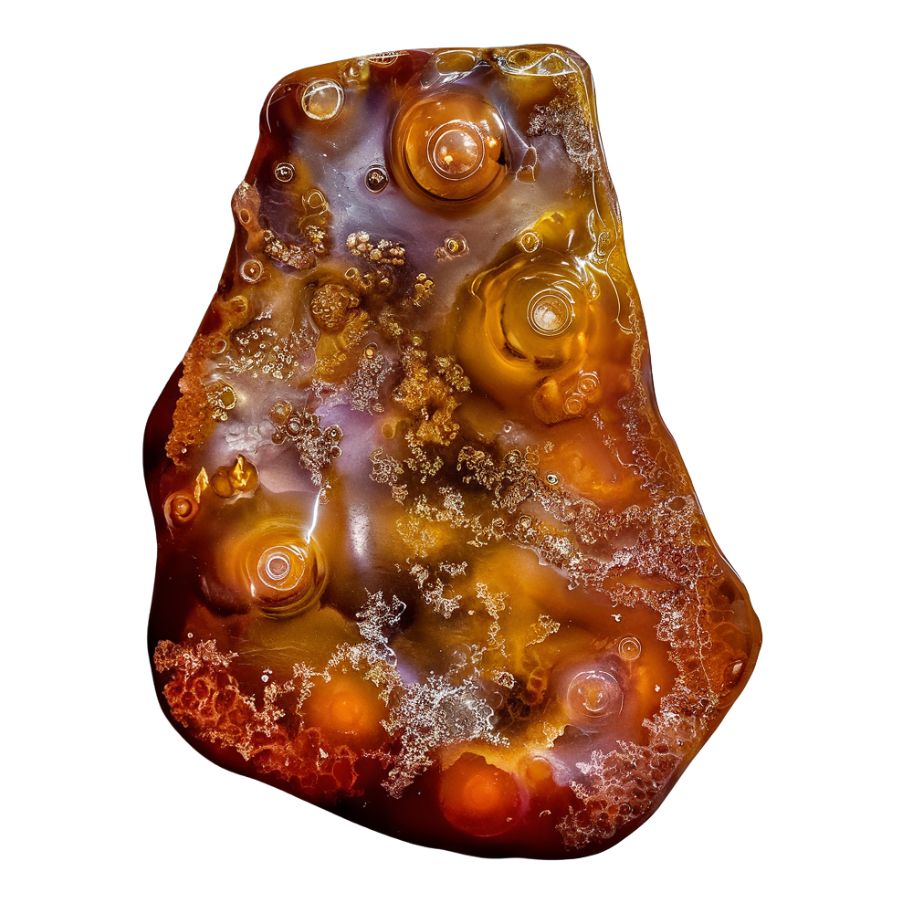
Brown Fire Agate displays a deep chocolate-brown base with brilliant flashes of color that dance across its surface. The most striking feature is how these colors appear to float at different depths within the stone, creating a three-dimensional effect.
The colors range from intense reds to bright oranges, often appearing in concentrated patches. The stone’s surface has a distinctive bubble-like texture that helps create its famous fire effect.
One special feature of Brown Fire Agate is its strong color concentration. The fire effect typically appears in bold, defined areas rather than being scattered throughout the stone.
Some exceptional pieces display color combinations that seem to shift and change as you move the stone, making each viewing angle unique.
If you want REAL results finding incredible rocks and minerals in Texas you need one of these 👇👇👇
Finding the coolest rocks in Texas isn’t luck, it's knowing what to look for. Thousands of your fellow rock hunters are already carrying Rock Chasing field guides. Maybe it's time you joined the community.
Lightweight, mud-proof, and packed with clear photos, it’s become the go-to tool for anyone interested discovering what’s hidden under our red dirt.
Join them, and make your next rockhounding trip actually pay off.
📘 Order the Texas Field Guide Now →
What makes it different:
🚙 Field-tested across Texas rivers, ranchlands, and roadcuts.
📘 Heavy duty laminated pages resist dust, sweat, and water.
🧠 Zero fluff — just clear visuals and straight-to-the-point info.
📍 Find hidden gems like Blue Topaz, Texas agate, and petrified wood fast.
⭐ Rated 4.8★ by real collectors who actually use it in the field.
Orange Fire Agate
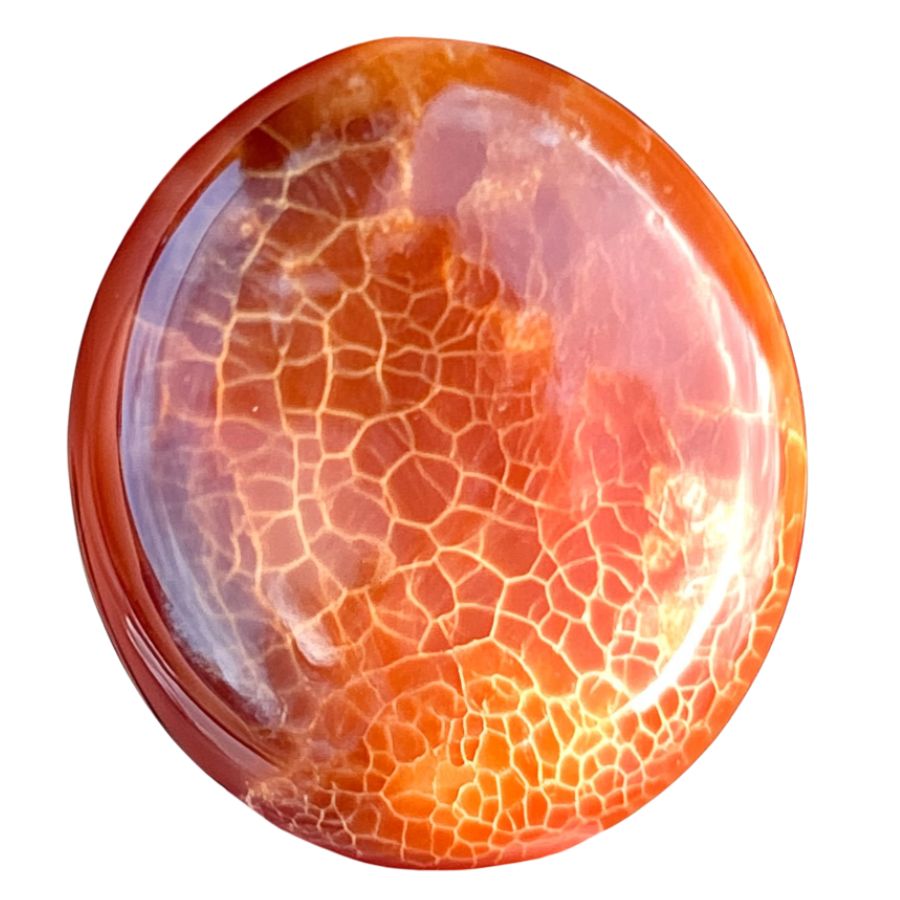
Orange Fire Agate shimmers with warm, sunset-like colors that seem to glow from within. The dominant orange tones mix with bright reds and yellows. These colors appear especially vibrant against the stone’s natural brown background.
The stone often shows interesting pattern formations that look like swirling flames or flowing liquid. These patterns form naturally during the stone’s creation and give each piece its own character.
A unique feature of Orange Fire Agate is its ability to show broad flashes of color. Instead of tiny specks, the color often appears in larger areas that create bold, dramatic effects.
The color layers in Orange Fire Agate often stack up in ways that create depth and dimension. When you look closely, you can see how these layers work together to produce the stone’s distinctive fire effect. The best pieces show clear, bright colors that remain visible from many different angles.
Yellow Fire Agate
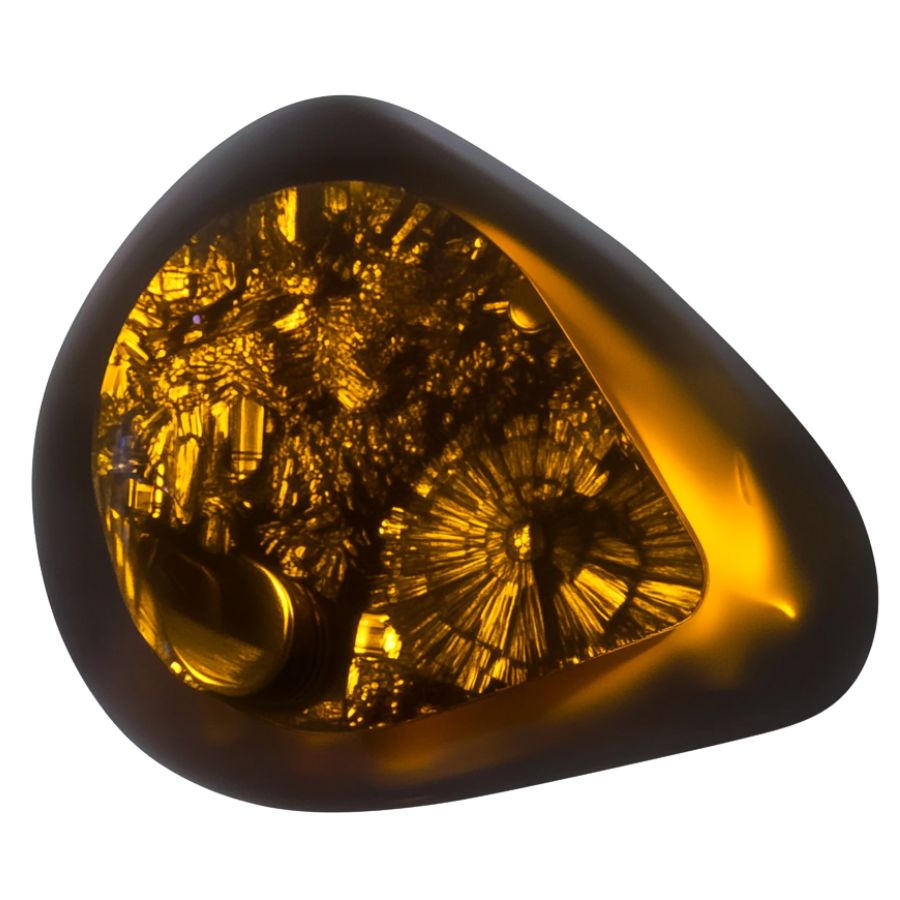
Yellow Fire Agate features bright, sunny yellow tones mixed with golden flashes that light up the stone. The yellow colors often appear alongside warm oranges and subtle greens, creating a bright, cheerful appearance.
Unlike other fire agates, the yellow variety often displays broader, more open patterns. This allows the yellow colors to spread out and create larger areas of bright color.
A special characteristic of Yellow Fire Agate is how its colors can shift between yellow and gold depending on the lighting. Sometimes, the stone shows unexpected flashes of green or blue, making it particularly interesting to observe.
The structure of Yellow Fire Agate often creates interesting patterns that look like sunbursts or radiating lines. These natural formations enhance the stone’s yellow tones and create fascinating visual effects.
Green Fire Agate
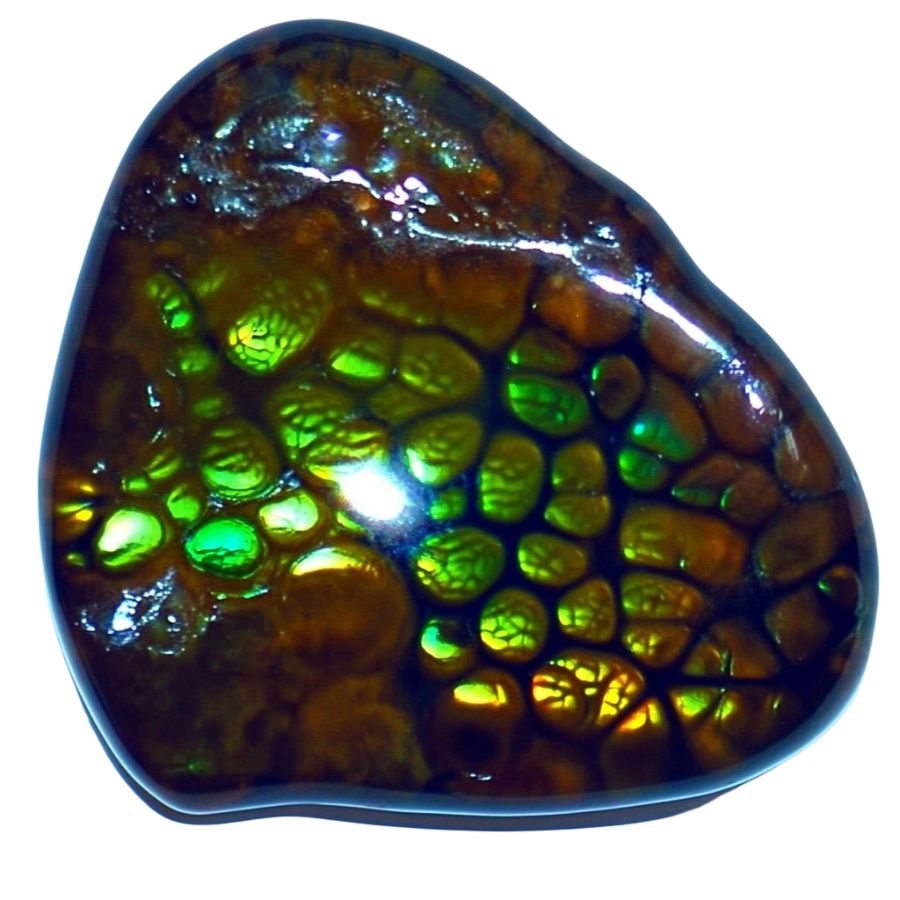
Green Fire Agate stands out with its unusual green flashes that sparkle against a dark background. This rare color combination creates an effect similar to the Northern Lights in miniature.
The green tones range from bright emerald to deep forest green, sometimes mixing with blue and turquoise highlights.
In natural sunlight, the greens become more vibrant and intense. Under artificial light, the stone might reveal subtle gold or blue undertones that weren’t visible before.
This stone sometimes shows an interesting phenomenon where the green fire appears to pulse or throb when the stone is moved. The combination of deep greens and shifting patterns creates a mesmerizing display that captivates viewers.
Peacock Fire Agate
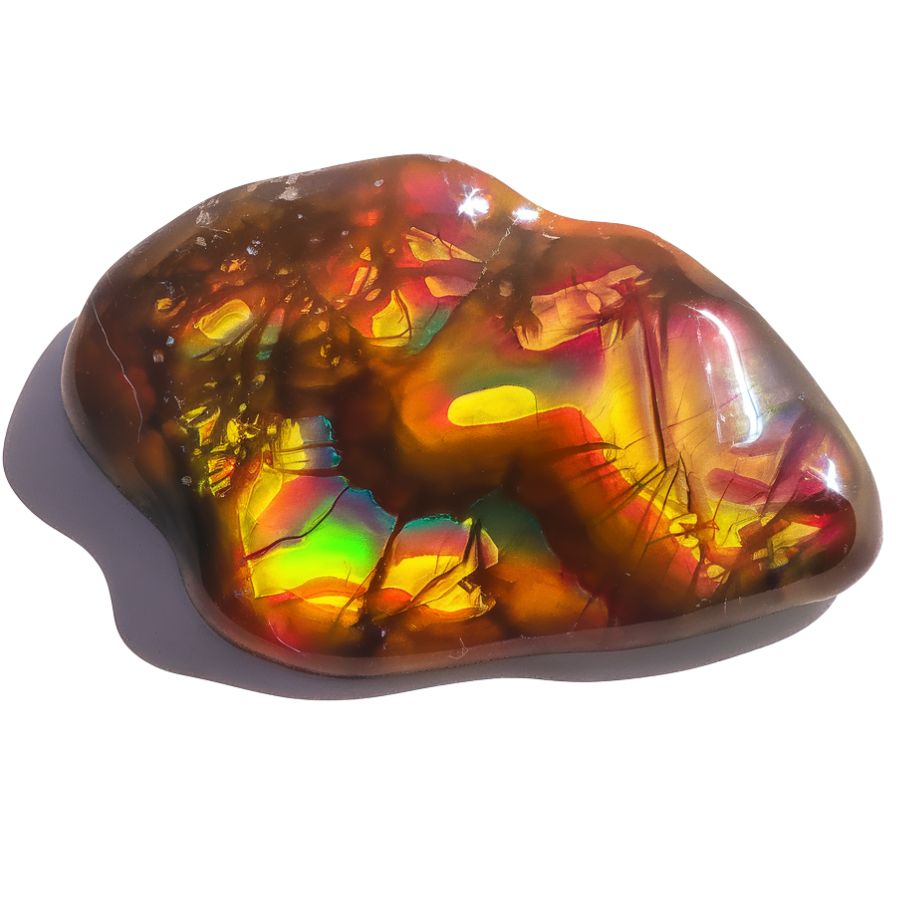
Peacock Fire Agate stands out for its remarkable display of iridescent colors that mirror a peacock’s feathers. The stone features bright greens, blues, and yellows that shimmer and change when viewed from different angles.
The stone’s surface has a unique grape-like structure called botryoidal formation. This creates small, rounded bumps across the surface that catch and reflect light in fascinating ways.
What makes this stone special is its ability to show three or more colors at once. While most fire agates display warm colors like orange and red, Peacock Fire Agate breaks this pattern with its cool, vibrant tones.
This variety requires skilled cutting to preserve its natural beauty. The cutting process must carefully consider the stone’s layers to maximize its color display and protect its delicate iridescent qualities. The end result is a stone that captures attention with its brilliant play of colors.
Crackled Fire Agate
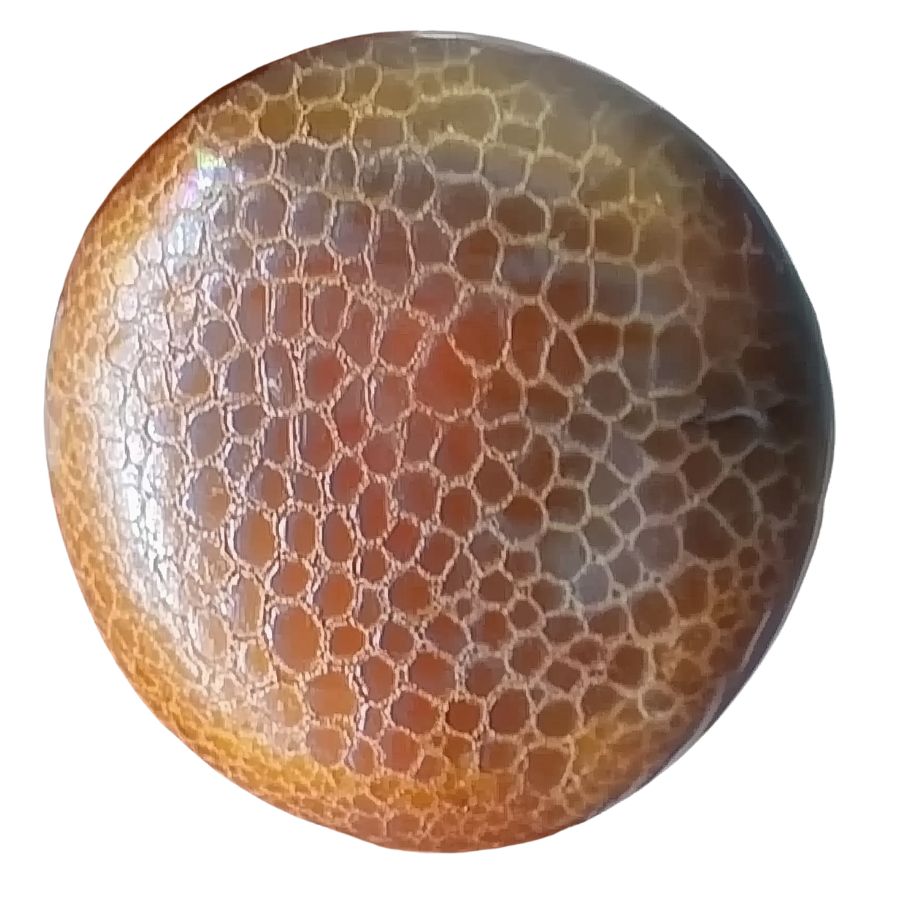
Crackled Fire Agate displays a deep reddish-brown base with bright flashes of orange, red, green, and gold. These colors create an effect that looks like flames trapped within the stone. The stone’s surface features a unique crackled pattern that resembles a spider’s web.
The stone gets its distinctive appearance through a special heat treatment process. The crackle effect adds depth and character to the stone’s natural fire-like appearance.
Unlike the uniform patterns seen in many stones, Crackled Fire Agate shows random, organic-looking designs. The combination of the crackled texture and the fire-like colors creates an impressive visual effect.
The complex internal structure of this stone makes it fascinating to observe. Light plays through the cracks and layers, creating an ever-changing display of colors. This interplay of light and pattern gives each stone its own personality and charm.
Mexican Fire Agate
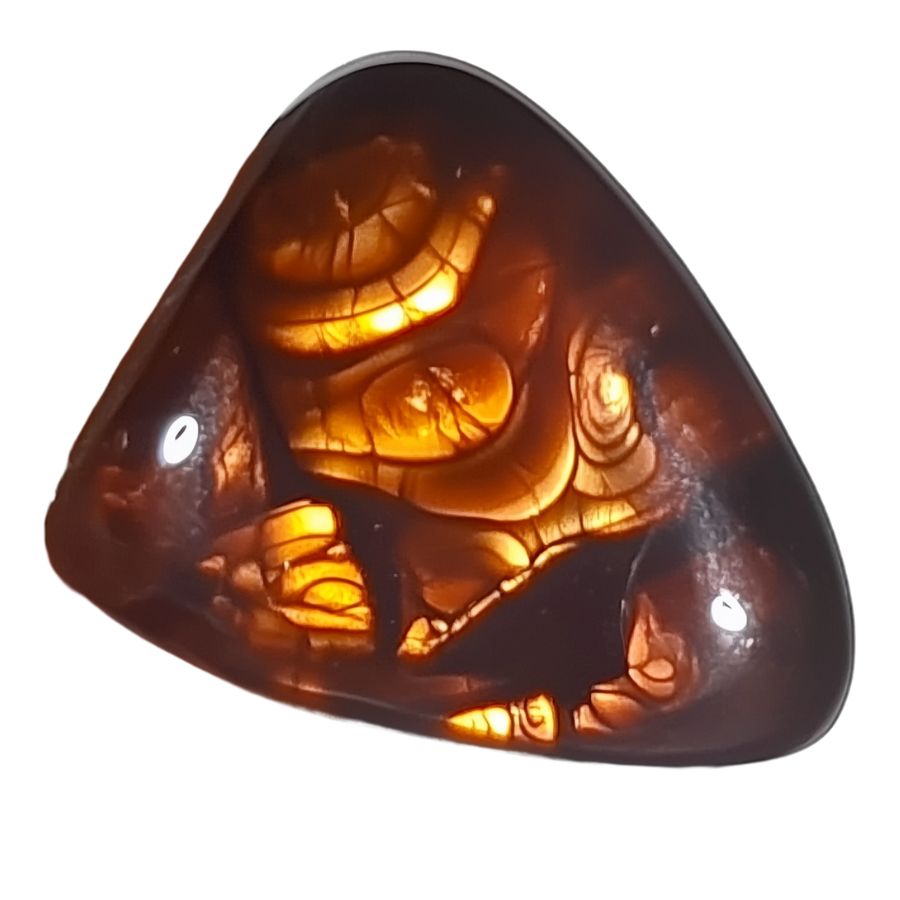
Mexican Fire Agate showcases brilliant flashes of color. The stone displays vivid reds, oranges, and yellows, with occasional hints of green and blue. These colors appear to move and shift within the stone, creating a dynamic visual effect.
The stone’s internal structure contains multiple thin layers that create its distinctive fire effect. These layers, built up over millions of years, catch and reflect light in unique ways.
Each piece of Mexican Fire Agate tells its own story through its pattern of colors. The stone’s surface often shows interesting textures and patterns that enhance its natural beauty. Some pieces display broad flashes of color, while others show intricate, detailed patterns.
The stone’s formation process gives it exceptional clarity and brightness. Unlike artificially enhanced stones, its beauty comes entirely from nature. .
Arizona Fire Agate
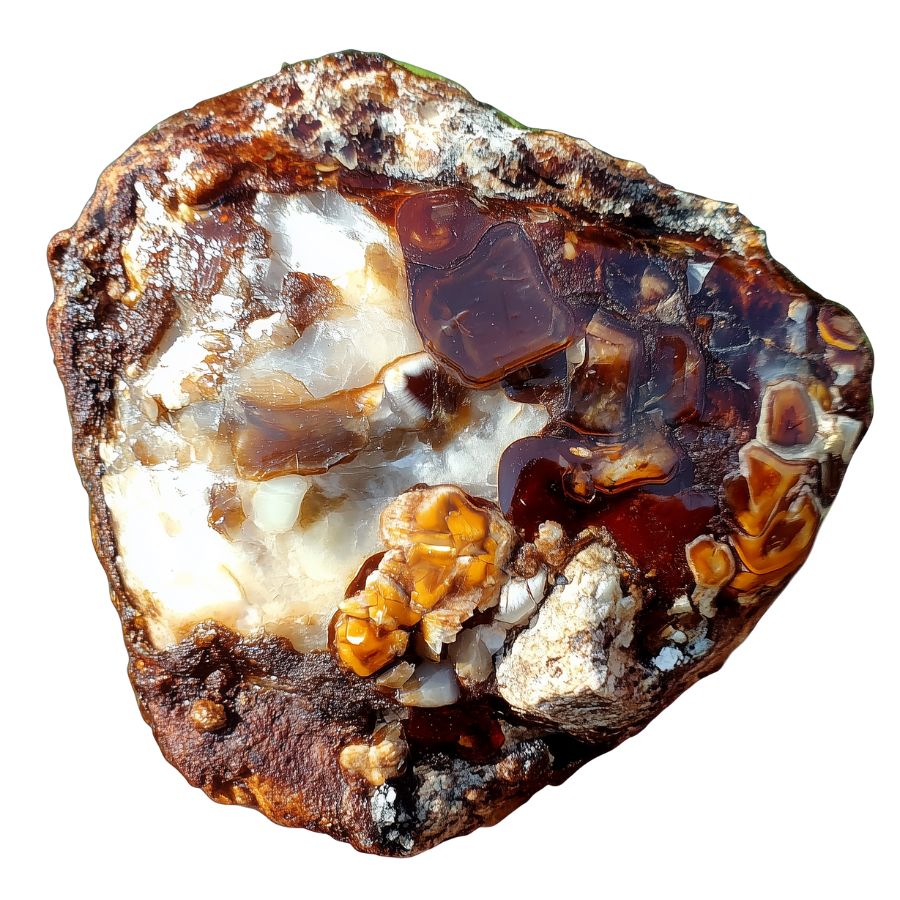
Arizona Fire Agate showcases a unique combination of a rich brown base with vibrant flashes of color. The stone’s distinguishing feature is its exceptional three-dimensional play of color, which appears to float within different layers.
It often shows stronger and more concentrated color patterns compared to other varieties. The fire effect typically appears in concentrated areas rather than spread throughout the stone.
This concentration creates dramatic focal points that catch the eye immediately. Many pieces display a distinct bull’s eye pattern where the colors radiate from a central point.
This stone is known for its durability and lasting color display. Unlike many other iridescent stones, its color effect doesn’t fade or diminish over time. The colors remain vivid even after years of exposure to light.
What Rough Fire Agate Looks Like
Here’s how you can identify a fire agate in its natural state.
Look for the Characteristic Brown Base Color
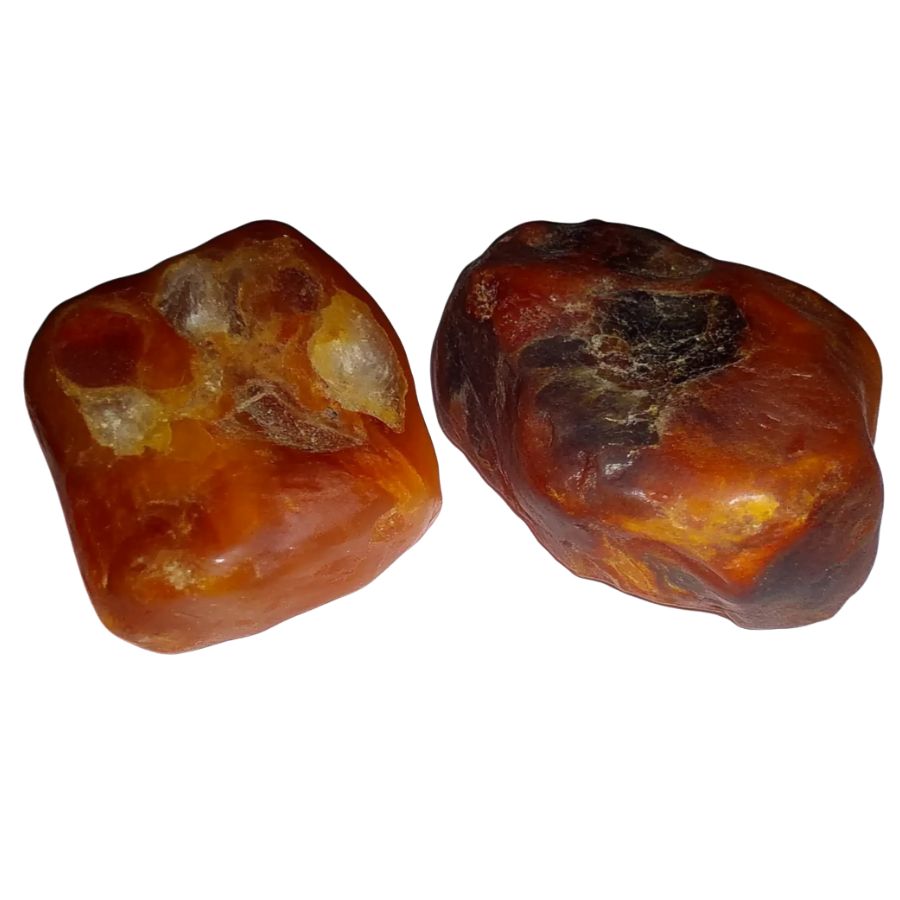
Raw fire agate typically shows up as a brownish-gray or reddish-brown nodule. Don’t expect the flashy colors right away! The base material looks pretty ordinary – like a dull, chocolate-colored rock.
Sometimes you’ll catch hints of that signature iridescence peeking through, especially in small cracks or worn areas.
Check for Botryoidal Surface Texture
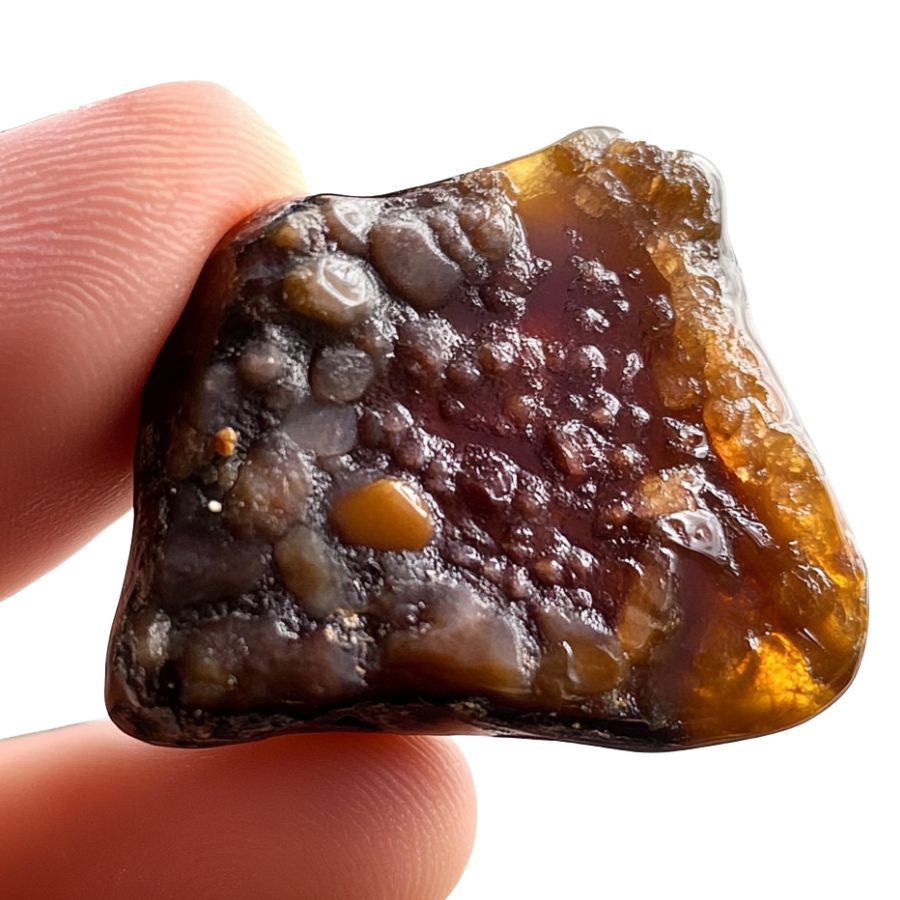
Run your fingers over the surface. Feel those grape-like bumps? That’s the botryoidal texture – a dead giveaway for fire agate.
These rounded bumps often cluster together, creating a bubbly surface that looks like frozen soap bubbles. Fresh pieces might have a crusty, rough coating hiding this texture.
Inspect for Color Play in Natural Light
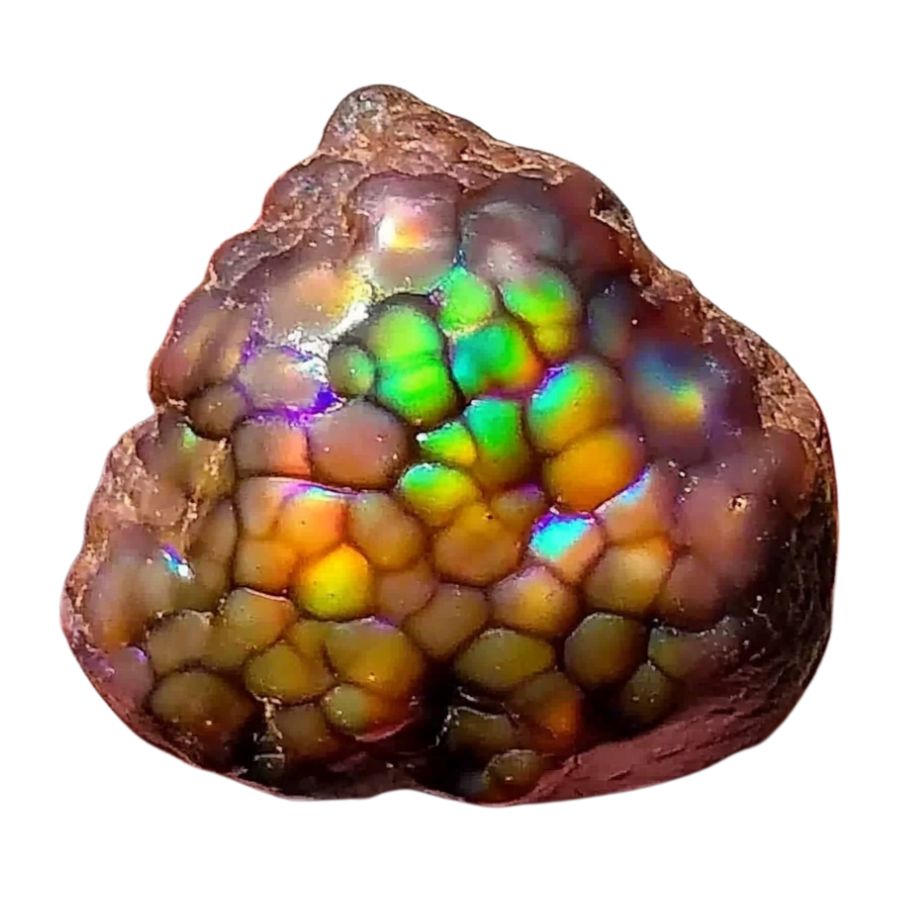
Hold the specimen under direct sunlight or bright light. Rotate it slowly. Look for flashes of green, gold, or red in small areas – especially where the surface is naturally worn.
These color flashes might be subtle in rough pieces, appearing like tiny windows of color.
Test the Chalcedony Properties
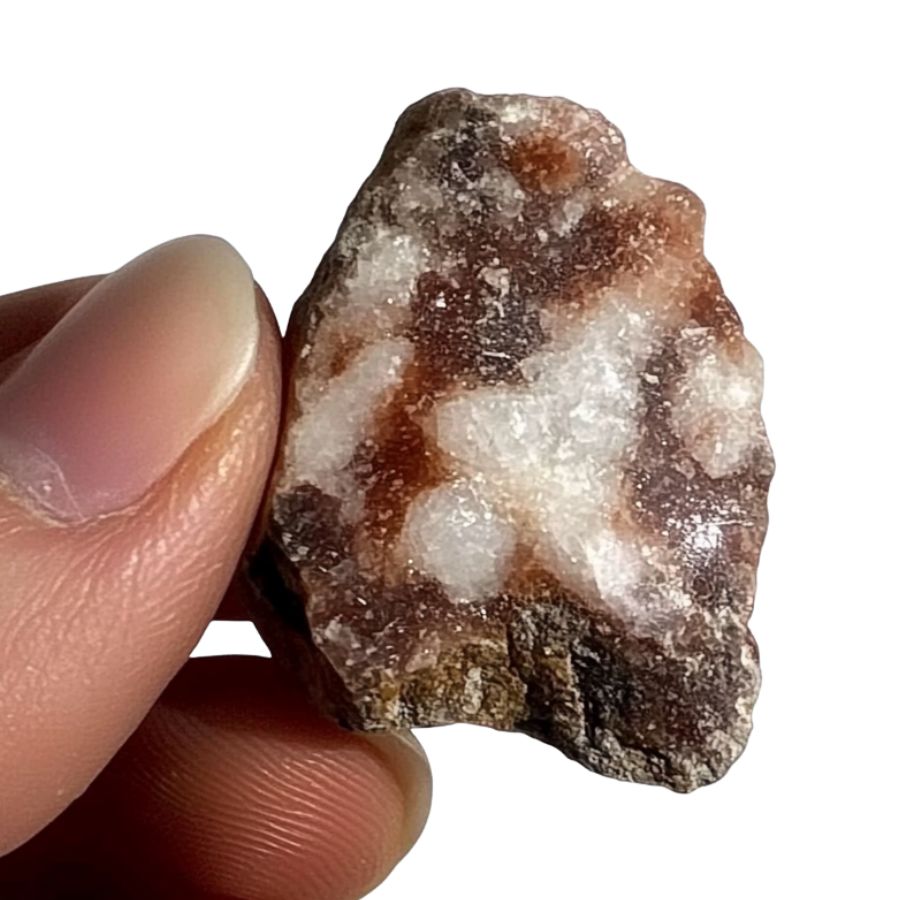
Fire agate is a variety of chalcedony, so it should feel quite solid and slightly warm to the touch. Try scratching it with a steel knife – it shouldn’t scratch easily.
The surface might show some waxy or glassy areas where the outer layer has worn away, revealing the chalcedony underneath.
The Tools You Will Need
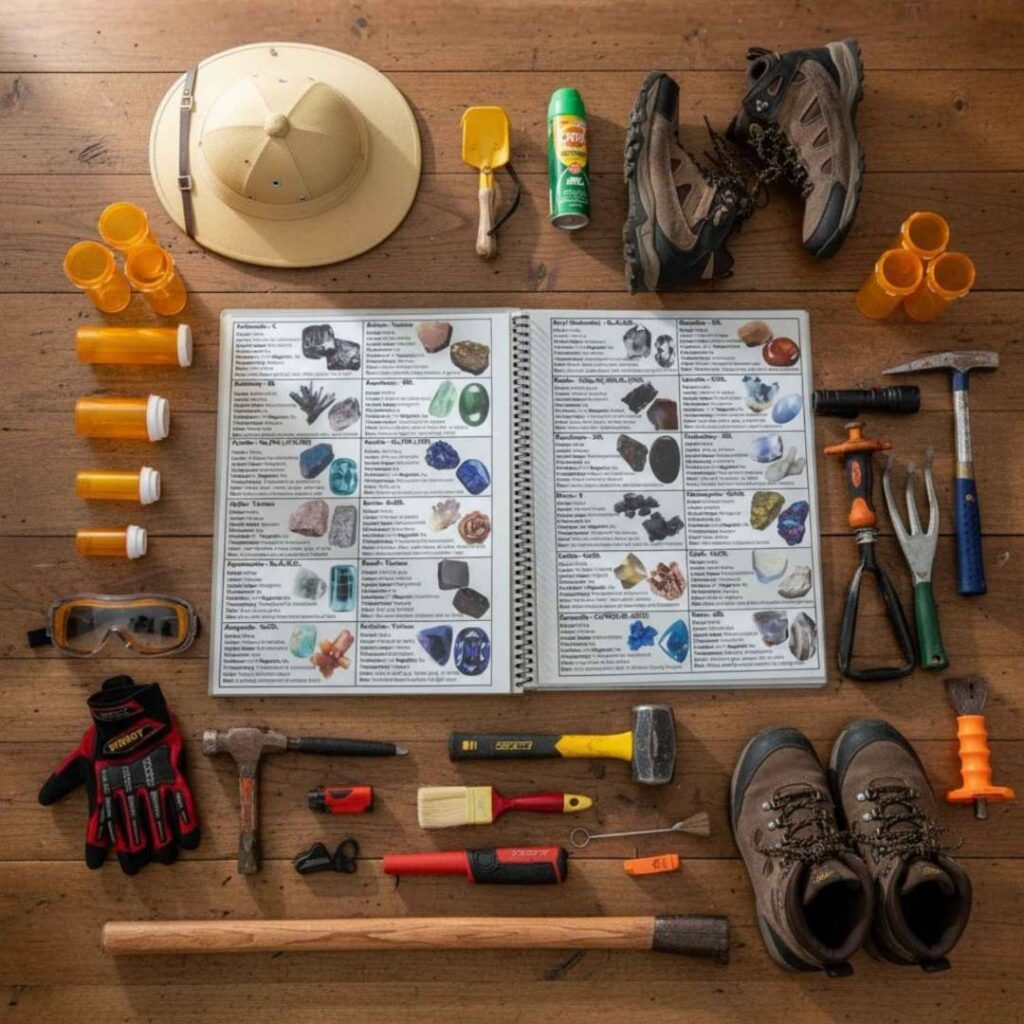
Fire agate may look like a simple brown stone at first glance, but the right tools can help you uncover its hidden flashes of color. You don’t need a pile of expensive equipment to get started. A few smart choices will make finding, identifying, and keeping your treasures much easier and a lot more fun.
A Trustworthy Field Identification Guide – Essential
Most people walk right past fire agate without ever realizing it. A good field guide fixes that problem fast.
With one clear photo, you’ll know whether that dull brown stone hides a flash of color inside. Rock Chasing’s Texas Rocks & Minerals Identification Field Guide makes that possible and takes all the uncertainty out of collecting.
Its waterproof pages and vivid photos make it ideal for long, dusty hunts. You’ll save time, learn faster, and come home with rocks worth keeping.
You can see HERE why it’s a favorite among Texas rockhounds!
Geologist’s Chisel – Essential
Fire agate often forms in cavities within volcanic rock, so a chisel helps you loosen pieces without breaking them. It gives you more control than a hammer alone, especially when you’re trying to keep the stone’s natural surface intact.
Hand Lens – Recommended
A hand lens brings out the fine details that make fire agate special. You can see the tiny layers of chalcedony and the shifting colors beneath the surface, which helps you decide whether to keep working a rock or move on. It’s a small tool, but it changes the way you look at what’s in your hand.
Gloves – Recommended
When you’re working around sharp rock and loose gravel, gloves protect your hands from cuts and scrapes. They also help with grip when you’re using tools or handling rough stones. Even a lightweight pair makes a big difference by keeping you comfortable and safe during long collecting sessions.
Spray Bottle – Optional
A quick mist of water can reveal the color and shine that make fire agate worth the hunt. Many stones look dull when dry, but a bit of moisture brings their true beauty to life. It’s a simple trick that helps you spot patterns that would otherwise stay hidden in the dust.
Tips on Where to Look
Fire agate is found in areas with past volcanic activity. These beautiful stones typically form in volcanic regions where silica-rich solutions filled cavities in rocks. Here’s where you should start looking:
Volcanic Rock Formations
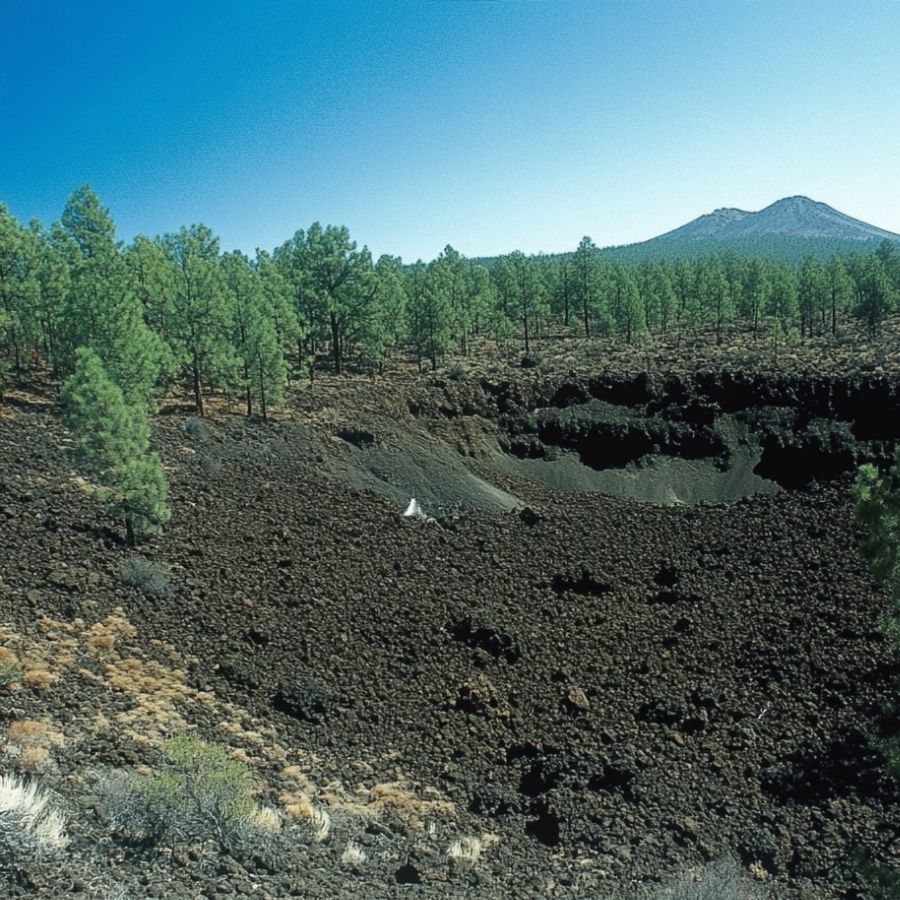
Look for areas with basalt or other volcanic rocks. The stone usually forms in gas pockets within these rocks. Check dark-colored, rough-textured rocks that seem bubbly or have lots of holes.
Areas where you spot chunks of obsidian are also promising, since both stones form in similar conditions.
Desert Washes and Dry Creek Beds
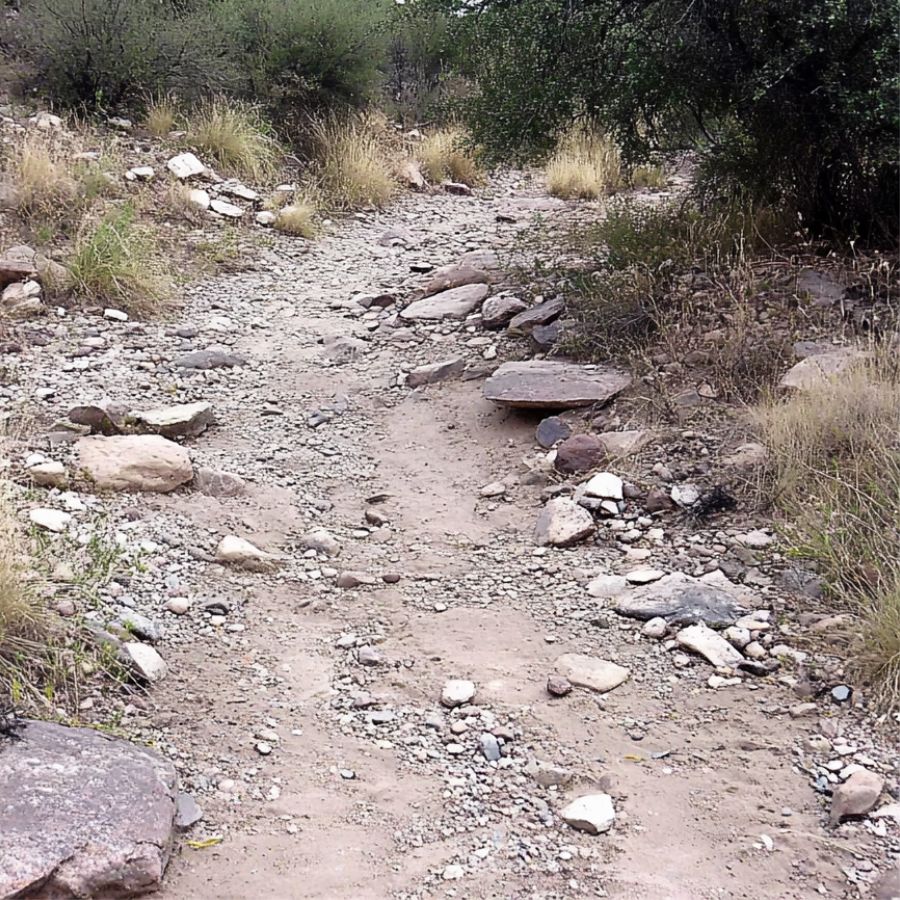
Search in dry creek beds that cut through volcanic areas. After rainstorms, these washes often expose new material and can reveal fire agate specimens that have weathered out of their host rock.
Keep an eye out for reddish-brown chunks with a waxy luster, which could be your target stone hiding under a chalcedony crust.
Old Mining Areas
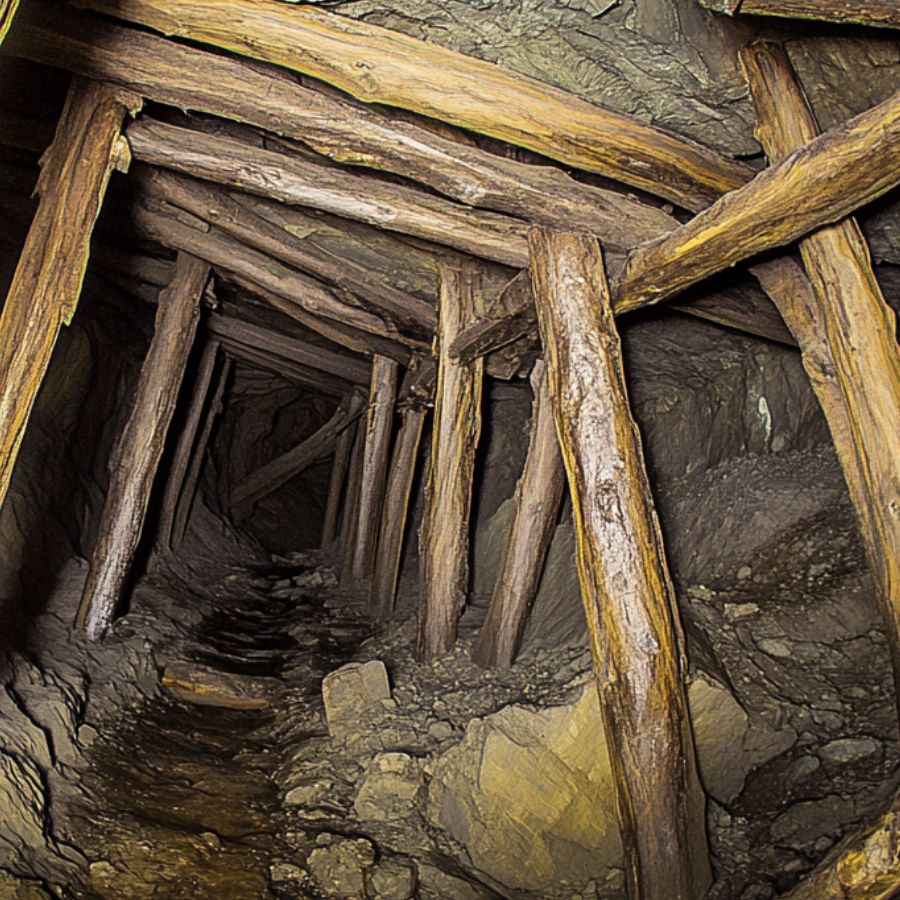
Check around abandoned mining districts, especially those known for copper minerals. Fire agate often occurs near copper deposits, so tailings piles and dumps from old mines can be great spots to search.
When you’re exploring these areas, look for rocks with a botryoidal (grape-like) surface texture and reddish-brown coloring, which are typical characteristics of fire agate’s outer appearance.
Hillside Slopes
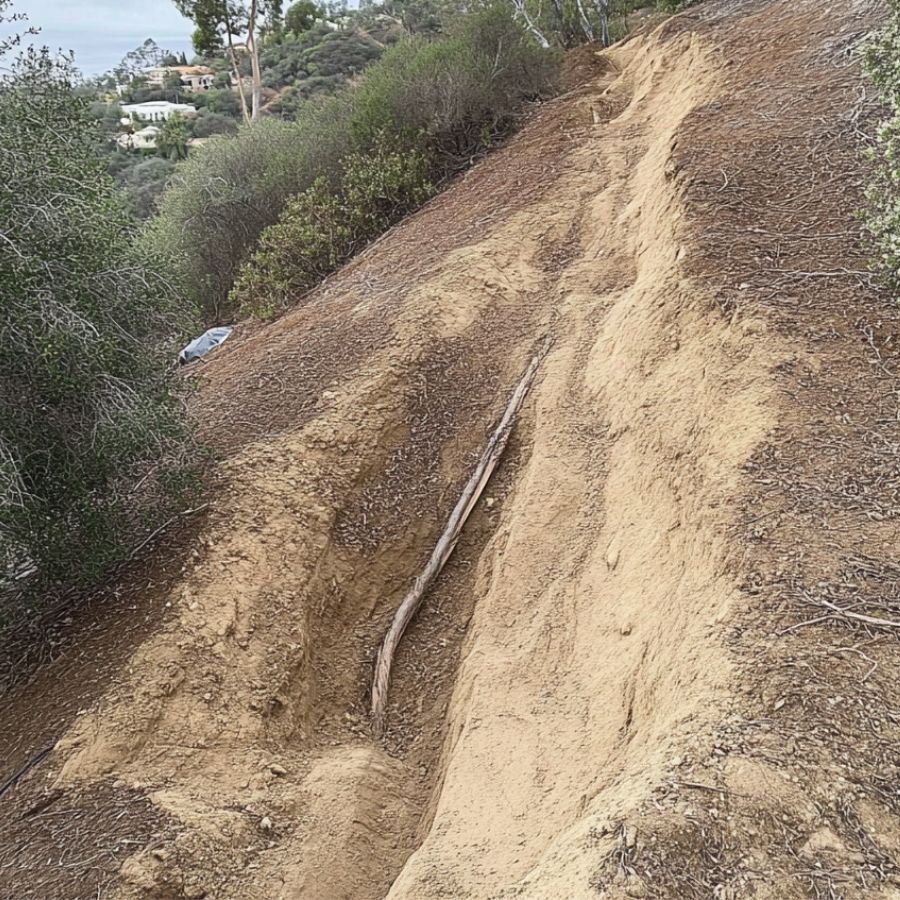
Explore gentle slopes below volcanic outcrops. As the host rock weathers, pieces of fire agate often roll downhill and collect along these slopes.
The best time to search these areas is after heavy rains have washed away loose soil and exposed new material, giving you a better chance of spotting the distinctive brown nodules that might contain fire agate.
Some Great Places To Start
Here are some of the better places in the state to start looking for fire agates:
Always Confirm Access and Collection Rules!
Before heading out to any of the locations on our list you need to confirm access requirements and collection rules for both public and private locations directly with the location. We haven’t personally verified every location and the access requirements and collection rules often change without notice.
Many of the locations we mention will not allow collecting but are still great places for those who love to find beautiful rocks and minerals in the wild without keeping them. We also can’t guarantee you will find anything in these locations since they are constantly changing.
Always get updated information directly from the source ahead of time to ensure responsible rockhounding. If you want even more current options it’s always a good idea to contact local rock and mineral clubs and groups
Big Bend
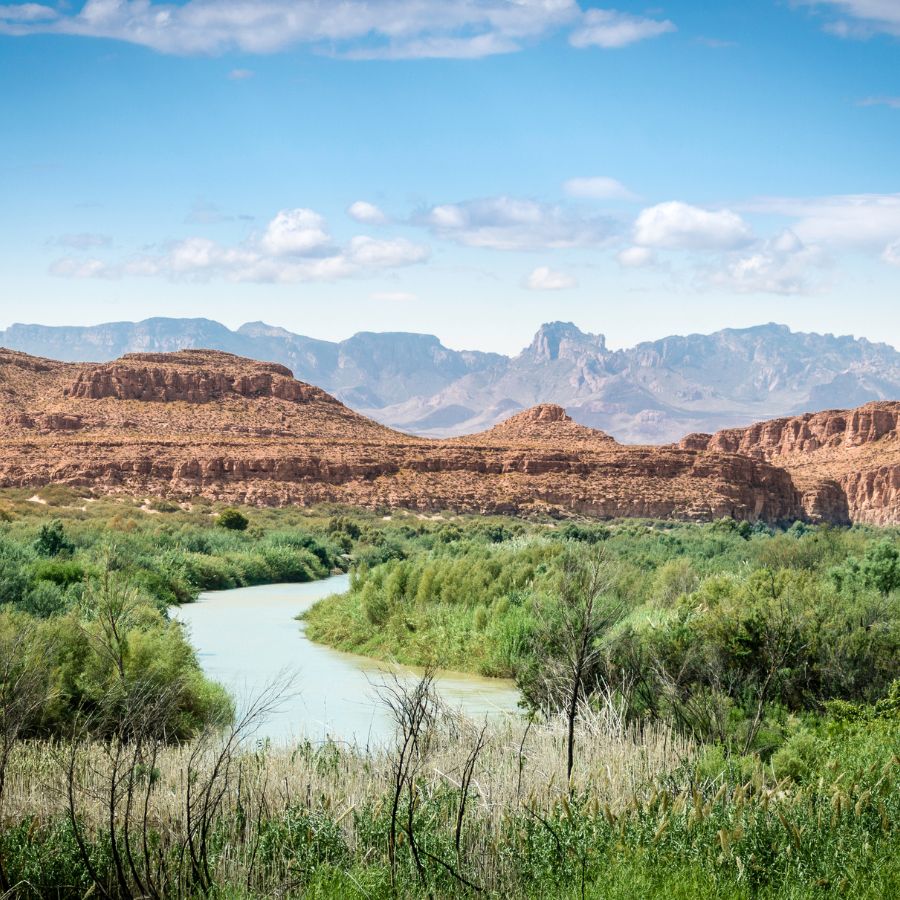
Big Bend is located in southwest Texas, right next to the Mexico border. This massive area covers more than 800,000 acres of desert mountains and deep canyons. Fire agate hunters focus on the area’s many dry creek beds and exposed hillsides, especially near the Rio Grande River.
Ancient seas once covered this land, leaving behind layers of rock filled with marine fossils. Later, volcanic activity pushed through these layers, creating the mountains we see today. These natural forces helped form the perfect conditions for fire agate.
You cab search the gravel beds near the Chisos Mountains. Small pieces of fire agate hide among the rocks washed down from higher ground. Local collectors suggest checking areas where volcanic rocks meet limestone formations.
Walking through Big Bend’s canyons, you might also spot other treasures like jasper and quartz crystals scattered across the desert floor.
You've probably walked past some incredible rocks and minerals. You need this guide 👇👇👇
We've all come across a cool rock that we could have sworn was rare or valuable but couldn't tell what it was.
If you're not 100% confident that you know every rock and mineral in Texas this guide is for you.
The Texas Rocks & Minerals Field Guide helps you ID what you find in seconds, from Hill Country agates to Llano granite, with crisp photos, simple charts, and zero fluff.
→ Grab your copy today and spot your next gem before anyone else does.
What this guide unlocks:
🧭 Confidence in the field — ID rocks fast and move on to the next find
🎒 Lightweight and waterproof — built for trails, not coffee tables
🌅 Weekend adventures — find treasures on rivers, ranches, and roadsides
🤠 Texas pride — explore the real geological beauty of your state
🔥 Motivation — every trip outside feels like a hunt for hidden gems
Marfa
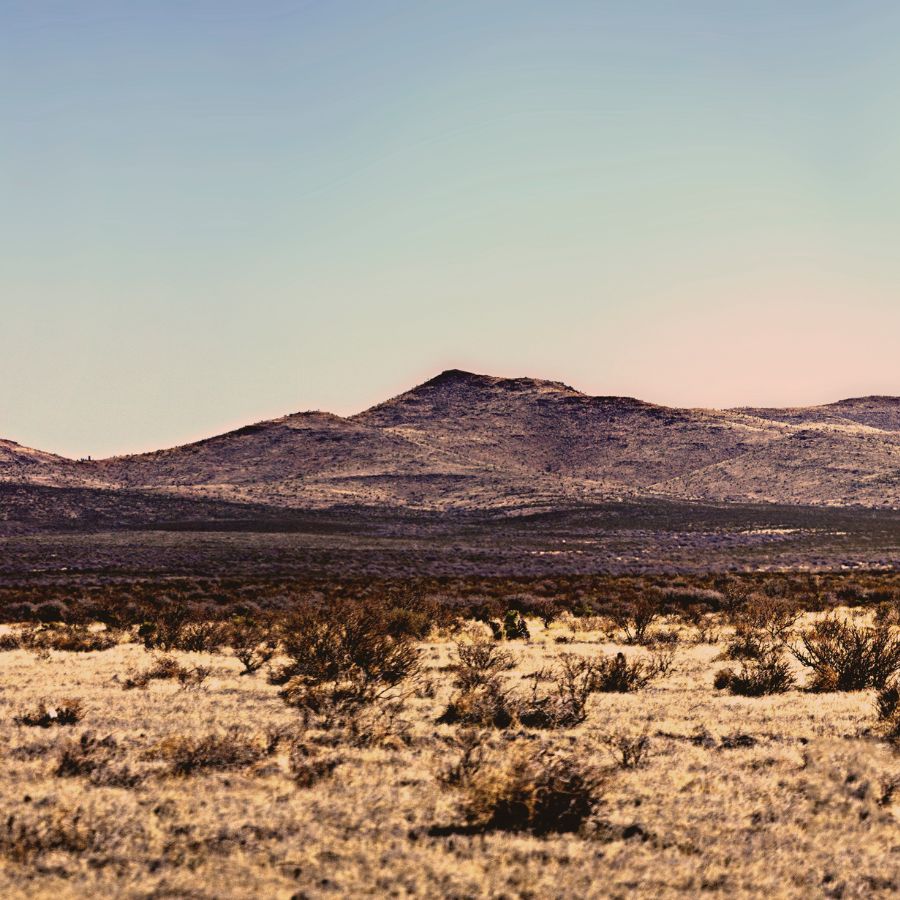
Marfa sits in the high desert of West Texas, between the Davis Mountains and Big Bend National Park. At 4,685 feet above sea level, this small city offers unique rock hunting spots thanks to its volcanic past.
You can find fire agates around the Davis Mountains and near Alpine. The Carver Agate Field above Alpine is a popular spot for finding different types of agates. Many collectors visit the volcanic areas because these spots often have the best specimens.
The desert landscape makes it easy to spot rocks on the ground, especially after rain washes away the dust.
Sierra Blanca
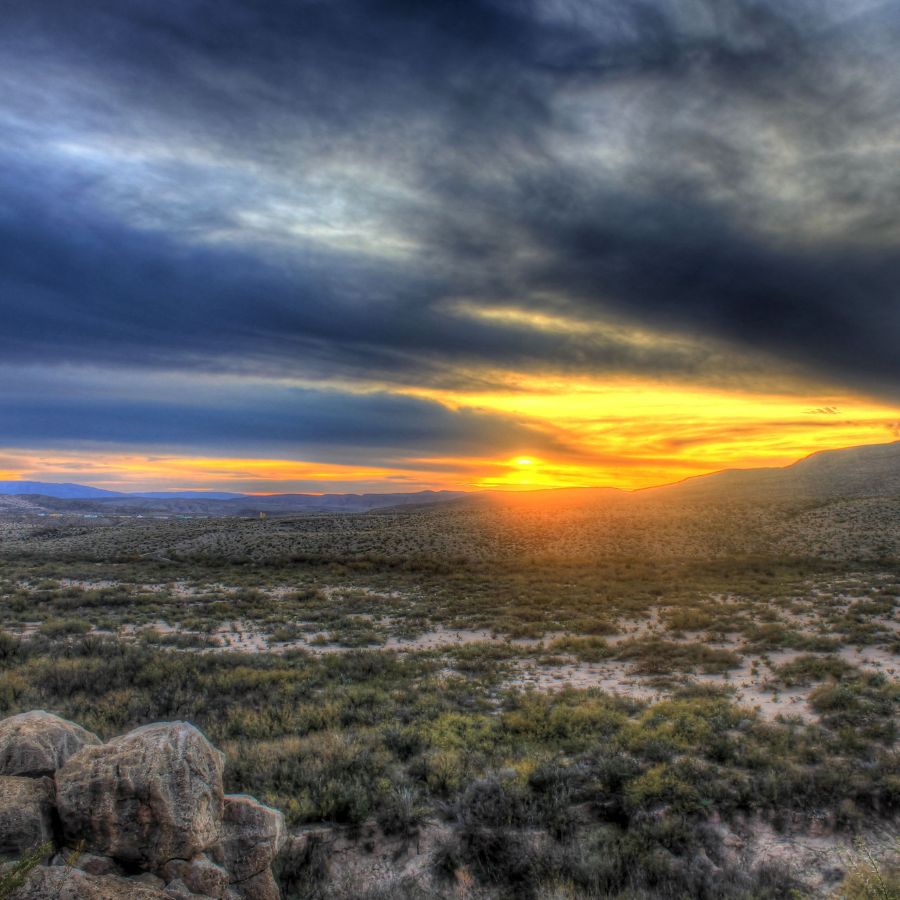
Sierra Blanca is located in Hudspeth County, Texas, close to the New Mexico border. This small desert town is part of the vast Chihuahuan Desert, with its dry climate and rocky landscapes.
Rocky outcrops and old volcanic areas around Sierra Blanca hold secrets for gem hunters. Fire agate is typically found in the dark basalt rocks and small holes left by ancient gas bubbles. Looking near old volcanic vents often leads to good finds.
The desert terrain makes this spot special for rockhounds. During cooler months, collectors search the volcanic areas for these gems. Each piece of fire agate from this region shows unique patterns created by layers of silica and iron oxide.
Terlingua District
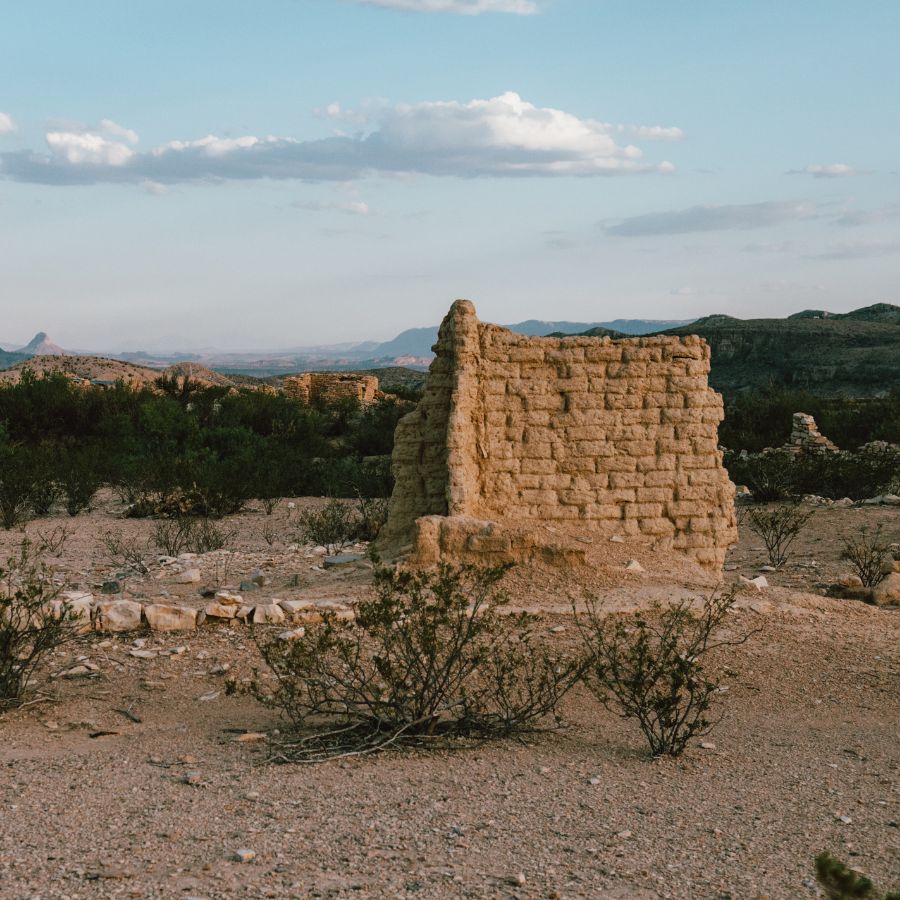
The Terlingua District is in southwest Brewster County, Texas. This desert area has a rich history of mining and unique rocks. People know this place for its special mineral deposits and different types of rocks.
Terlingua is famous for its cinnabar deposits, which miners used to get mercury. Scientists first found a mineral called terlinguaite here, making this place important for rock collectors. Another special find is jaboncillo, which has bands of cinnabar and hematite crystals mixed together.
You can search the old mining areas and exposed rock faces for fire agates.
Bishop Ranch
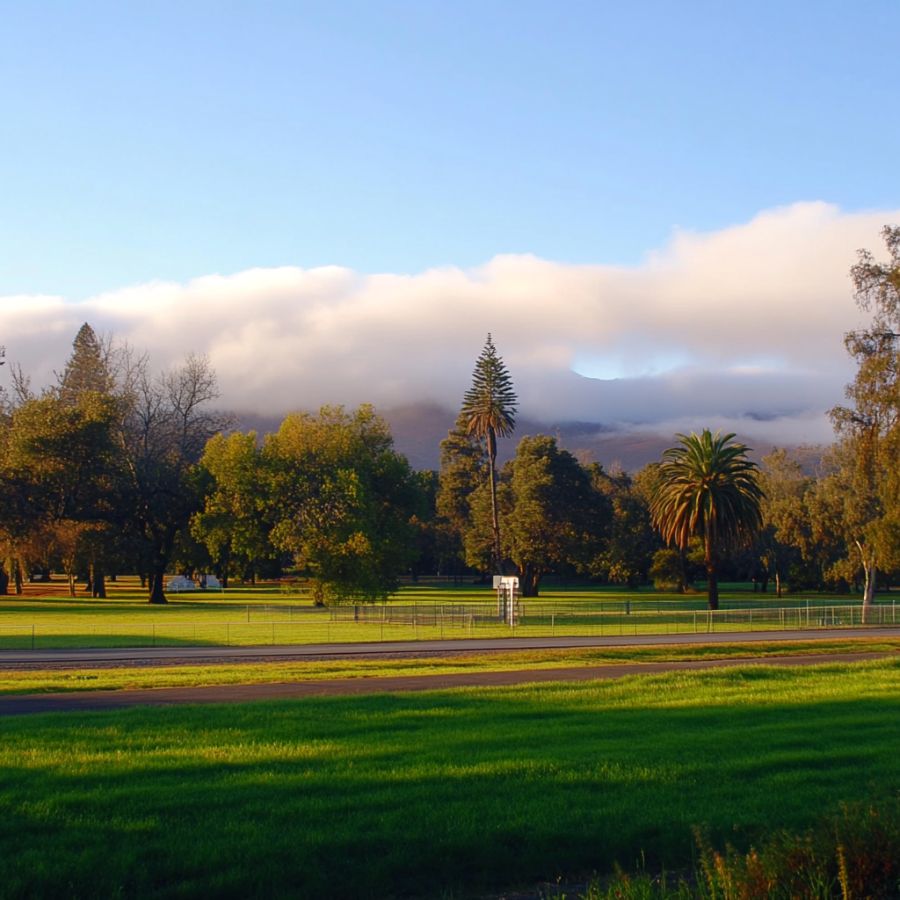
Bishop Ranch sits in northwest Texas, close to the small town of Marfa in Presidio County. This wide-open ranch is part of the beautiful Big Bend region, famous for its rough desert landscape and rocky hills.
The ranch ground holds many different types of agates. Rock collectors often find beautiful plume agates and moss agates here.
Highway 169 is a great spot where people look for agates. Casa Piedra Road also has good hunting areas.
The best places to search for fire agate are in dry creek beds and along the edges of old volcanic flows. Many rockhounds bring water bottles to spray on rocks – this helps show the true colors of potential agates.
Places Fire Agate has been found by County
After discussing our top picks, we wanted to discuss the other places on our list. Below is a list of the additional locations along with a breakdown of each place by county.
| County | Location |
| Brewster | Alpine |
| Presidio | Lobo Valley |
| Brewster | Agua Fria Ranch |
| Brewster | Glass Mountains |
| Brewster | Stillwell Ranch |
| Culberson | Dog Canyon Area |
| Hudspeth | Quitman Mountains |
| Brewster | Eagle Flat |
| Brewster | South Larremore Ranch |
| Reeves | Pigmon Ranch (near Balmorhea) |

